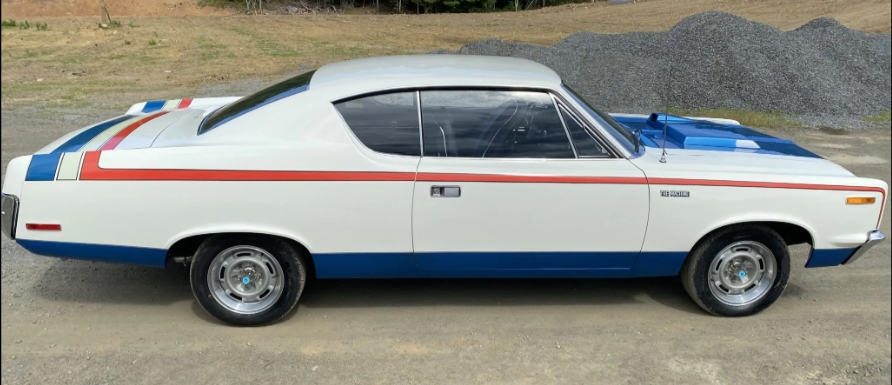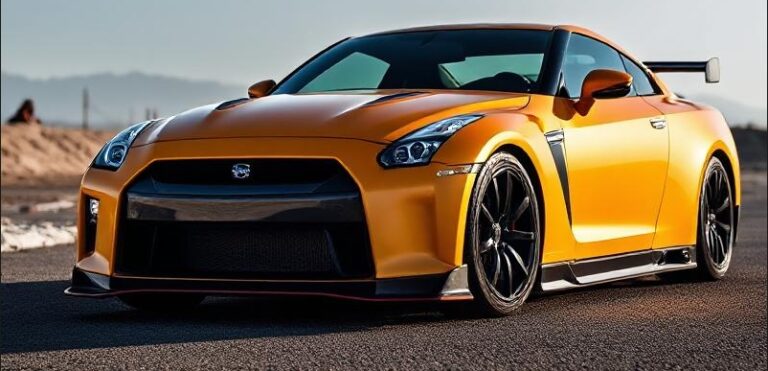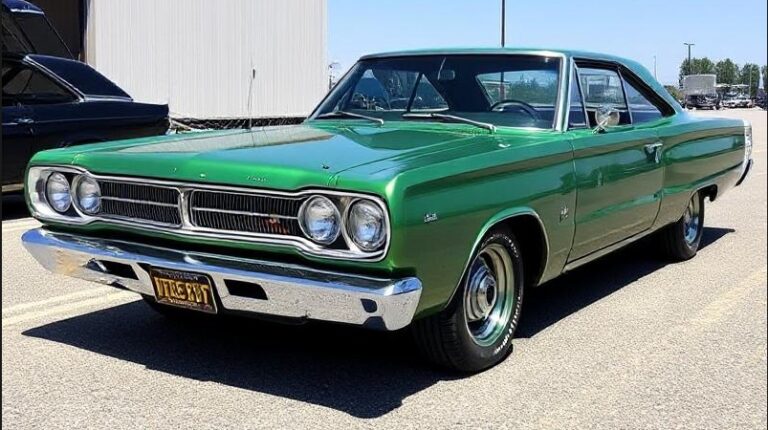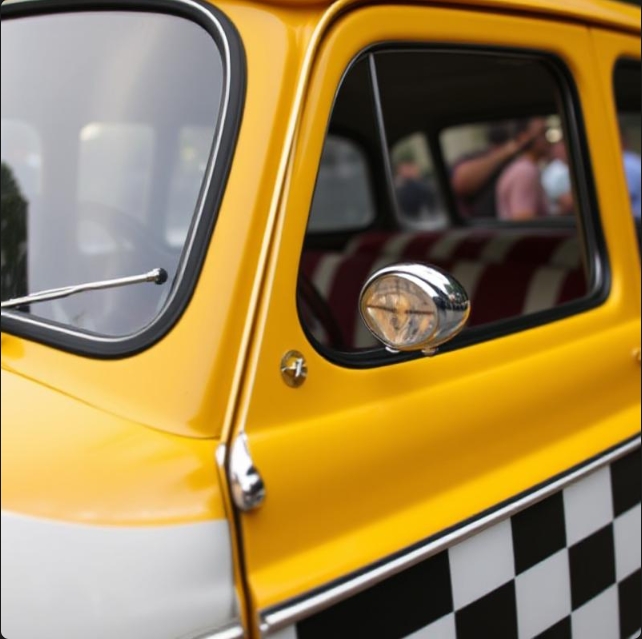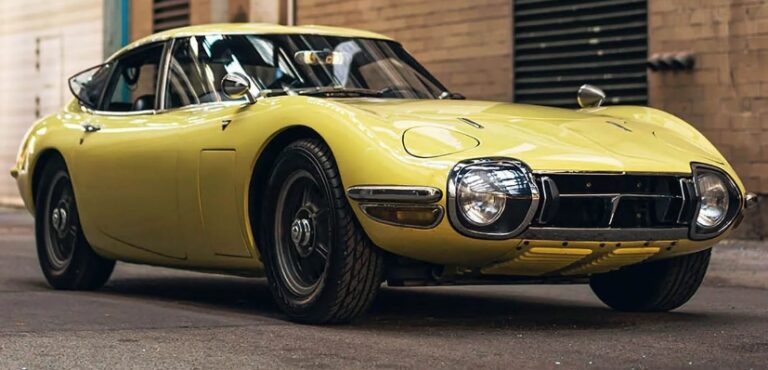The Screaming Rebel: Evolution of the AMC Rebel Machine
The American Motors Corporation (AMC) often played the role of underdog in the highly competitive American automotive landscape of the 1960s and early 1970s. While giants like General Motors, Ford, and Chrysler dominated sales charts, AMC carved its own niche with innovative designs, value-driven offerings, and a willingness to experiment. One of their most memorable and impactful forays into the muscle car arena was the AMC Rebel Machine, a car that embodied raw power, bold styling, and a rebellious spirit. This article delves into the history of the Rebel Machine, exploring its origins, evolution, model variations, and the enduring legacy it left behind.
The Genesis: AMC’s Muscle Car Ambitions (1969)
The late 1960s were the golden age of muscle cars, characterized by high-horsepower engines, aggressive aesthetics, and a focus on performance. Recognizing the potential of this market segment, AMC decided to create a car that would stand toe-to-toe with the established muscle car heavyweights. The result was the Rebel Machine, introduced in the 1969 model year.
The Rebel Machine wasn’t a completely new model but rather a performance package applied to the existing AMC Rebel line. This strategic approach allowed AMC to leverage its existing production capacity and quickly enter the muscle car fray. The 1969 Rebel Machine was a bold statement, designed to capture attention and generate excitement.
Key Features of the 1969 Rebel Machine:
- Engine: The heart of the Machine was a potent 390 cubic-inch (6.4L) V8 engine, factory-rated at 340 horsepower and 430 lb-ft of torque. This engine provided ample power for spirited acceleration and impressive quarter-mile times. This engine was a key component in the Rebel Machine’s identity.
- Transmission: Standard transmission options included a heavy-duty Borg-Warner T-10 four-speed manual transmission or an optional Chrysler-built Torque-Command three-speed automatic. The manual transmission was preferred by performance enthusiasts.
- Suspension: To handle the increased power, the Rebel Machine received a performance-tuned suspension package, including stiffer springs, heavy-duty shocks, and a thicker front sway bar. These modifications improved handling and body control.
- Exterior Styling: The Rebel Machine’s aggressive stance was immediately noticeable. It featured a distinctive hood scoop, functional side scoops, and a bold rear spoiler, all designed to enhance aerodynamics and create a menacing appearance. The most striking visual element was the iconic red, white, and blue paint scheme, a true representation of the American spirit. The paint scheme was a key identifier of the Rebel Machine. The 1969 Machine was only available in this color combination.
- Interior: The interior of the Rebel Machine featured performance-oriented appointments, including bucket seats, a tachometer, and a sporty steering wheel. The focus was on the driver experience and creating a performance-focused environment.
- Production: The 1969 Rebel Machine was a limited-production model, with only 1,275 units produced. This rarity makes them highly sought after by collectors today.
The Evolution Continues: The 1970 Rebel Machine
Building on the success of the 1969 model, AMC refined and improved the Rebel Machine for the 1970 model year. While retaining the core formula of high performance and bold styling, several changes were implemented to further enhance the car’s appeal.
Key Changes and Features of the 1970 Rebel Machine:
- Engine: The 390 cubic-inch V8 engine remained the standard powerplant, but AMC made some internal modifications to improve performance and reliability.
- Transmission: The transmission options remained the same: the Borg-Warner four-speed manual and the Chrysler-built three-speed automatic.
- Exterior Styling: The 1970 Rebel Machine received a revised front end with a new grille and headlamp treatment. The hood scoop was redesigned, and the side scoops were reshaped. The rear spoiler remained a prominent feature. The paint scheme was updated, still retaining the red, white, and blue theme but with a slightly different layout. A wider range of color options were available including: Frost White, Matador Red, and Starlight Black.
- Interior: The interior of the 1970 Rebel Machine received some minor updates, including revised seat upholstery and trim.
- Production: The 1970 Rebel Machine was produced in greater numbers than the 1969 model, although it remained a limited-production car. This increase in production helped to increase its availability.
Trim Levels and Options
Throughout its production run, the Rebel Machine was offered as a single trim level, focusing on performance and aggressive styling. However, AMC provided several optional features to allow buyers to personalize their machines. These options included:
- Transmission: The choice between the four-speed manual and three-speed automatic.
- Axle Ratio: Different rear axle ratios were available to optimize performance for different driving styles.
- Power Steering: Power steering was available as an option for enhanced maneuverability.
- Power Brakes: Power brakes provided improved stopping power.
- Air Conditioning: Air conditioning offered a touch of luxury and comfort.
- Stereo System: A variety of radio and stereo options were available.
- Tachometer and Gauges: These features were standard on the Rebel Machine to assist with monitoring engine performance.
- Wheels and Tires: Buyers could choose from different wheel and tire combinations to further enhance the car’s appearance and performance.
The Decline and the Legacy
The muscle car era began to wane in the early 1970s due to rising insurance costs, stricter emissions regulations, and the evolving preferences of car buyers. The 1970 model year marked the end of the Rebel Machine’s production run. AMC, like many other automakers, began to shift its focus towards more fuel-efficient and less overtly powerful vehicles.
Despite its short lifespan, the AMC Rebel Machine left a lasting impact on the muscle car scene. It demonstrated AMC’s ability to build a competitive and stylish performance car, challenging the established giants of the industry. The Rebel Machine’s bold styling, potent engine, and limited production run have made it a highly sought-after collector’s item.
.

.
Model Year and Production Summary:
- 1969: 1,275 units produced
- 1970: Production numbers were higher than the 1969 model, but exact figures vary in different sources.
Rebel Machine Specifications (based on 1970 Model)
- Engine: 390 cu in (6.4L) V8, 340 hp @ 5100 rpm, 430 lb-ft @ 3600 rpm
- Transmission: Borg-Warner T-10 4-speed manual or Chrysler Torque-Command 3-speed automatic
- Wheelbase: 114 inches
- Length: 195.2 inches
- Width: 74.3 inches
- Height: 53.5 inches
- Weight: Approximately 3,500-3,600 lbs (depending on options)
- 0-60 mph: Approximately 6.0 seconds (manual transmission)
- Quarter Mile: Approximately 14.0 seconds (manual transmission)
Why the Rebel Machine Matters
The Rebel Machine is more than just a fast car; it is a symbol of the American automotive spirit. Here are the reasons why the Rebel Machine is significant:
- Underdog Story: The Rebel Machine represented AMC’s tenacity and ability to compete with larger, more established automakers.
- Bold Design: The car’s distinctive paint scheme, hood scoop, and aggressive styling made it stand out from the crowd.
- Performance: The 390 V8 engine provided impressive power and acceleration, making the Rebel Machine a true muscle car.
- Rarity: Limited production numbers have made the Rebel Machine highly desirable among collectors, contributing to its value.
- Legacy: The Rebel Machine remains an iconic car that is celebrated by enthusiasts and remembered for its unique personality and rebellious attitude.
In Conclusion
The AMC Rebel Machine, though a brief chapter in automotive history, remains a significant example of AMC’s effort to compete in the muscle car market. Its bold design, powerful engine, and limited production have made it a highly coveted collector’s item. It is a testament to the creativity and innovation of the American automotive industry during the golden age of muscle cars. The Rebel Machine is more than just a car; it’s a symbol of a time when performance, style, and a rebellious attitude ruled the road. It stands as a reminder that even the underdogs can make a lasting impact.
